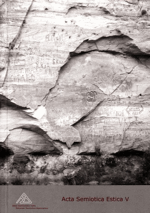Loomulik keel kui primaarne modelleeriv süsteem. Ühe mõiste elulugu
Natural language as a primary modeling system. The biography of a concept
Author(s): Priit PõhjalaSubject(s): Semiotics / Semiology
Published by: Eesti Semiootika Selts
Keywords: natural language; culture; primary modeling system; secondary modeling system; tertiary modeling system; loomulik keel; kultuur; primaarne modelleeriv süsteem; sekundaarne modelleeriv süsteem; tertsiaarne modelleeriv süsteem
Summary/Abstract: The aim of this article is to narrate and interpret the biography of a well-known concept “primary modeling system” that was used by Tartu-Moscow Semiotic School to refer to natural language. The first chapter concentrates on the birth of this term and tries to explain those sociopolitical and scientific impulses that motivated Soviet semioticians, especially Juri Lotman, to use and popularise it. The second part of this article defines the concept “primary modeling system” more precisely by placing it in the context of another related concept – “secondary modeling system” or “culture”. The third chapter is a brief and selective historiography in a way, because it outlines some similar terms and possible ideological “forerunners” from the past. In the fourth and fifth part the contemporary criticism is introduced. The main antagonist of the idea of natural language as a primary modeling system is Thomas A. Sebeok, who – from the biosemiotic point of view – suggests to call the human language a secondary modeling system, because the primary one is organism’s Umwelt.
Journal: Acta Semiotica Estica
- Issue Year: 2008
- Issue No: 5
- Page Range: 083-096
- Page Count: 14
- Language: Estonian

